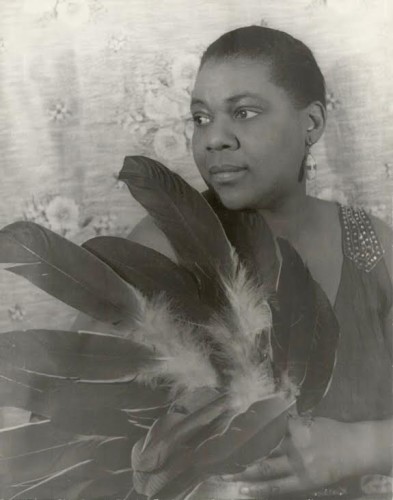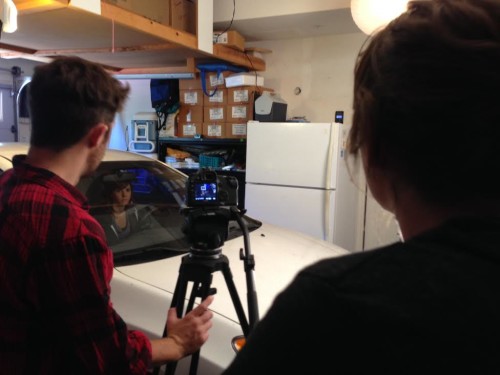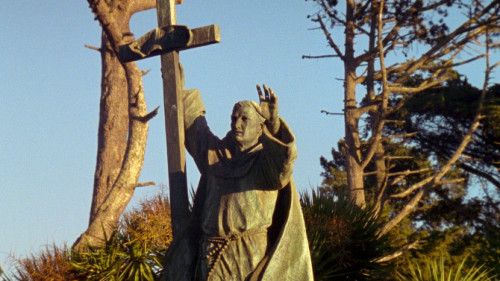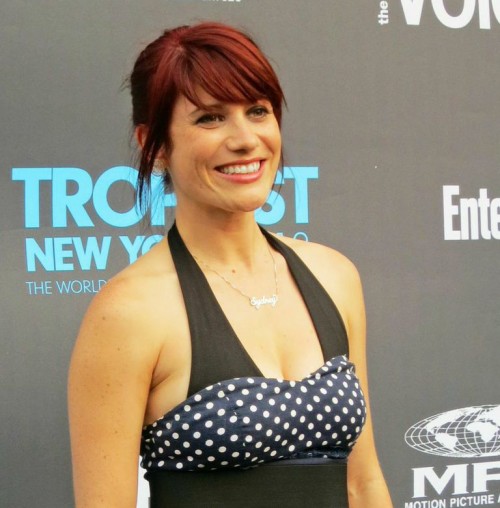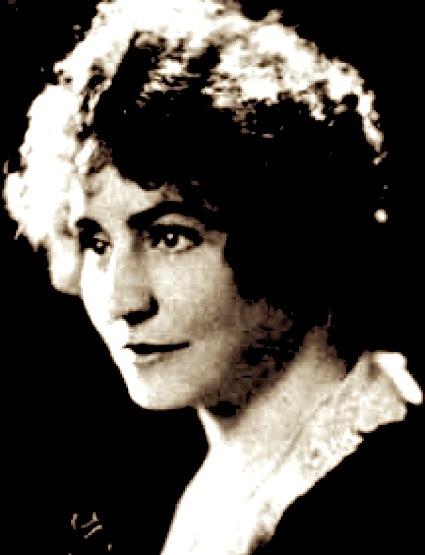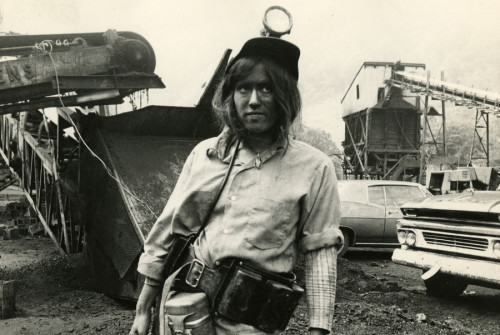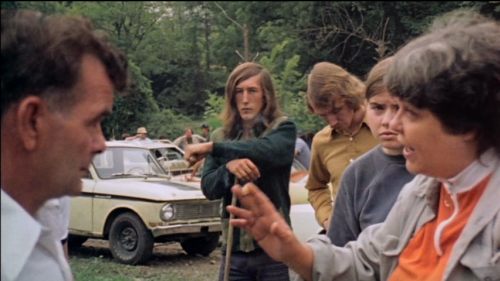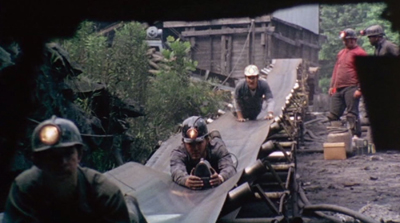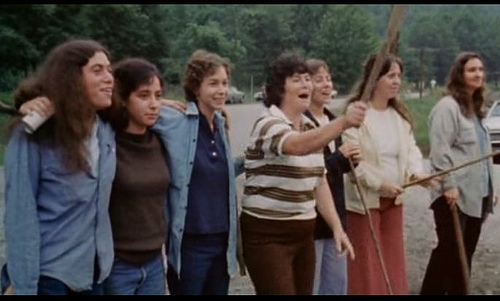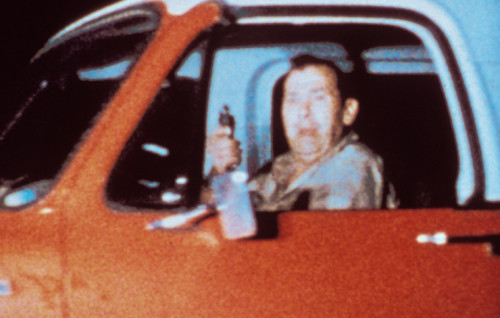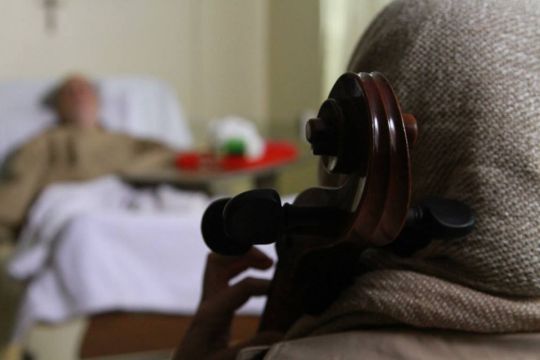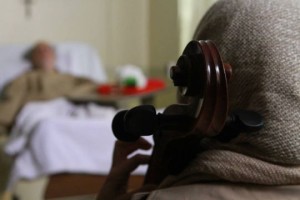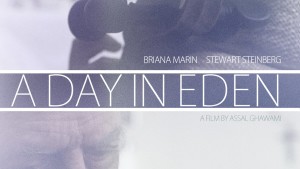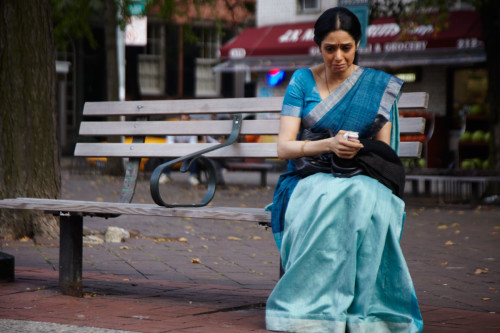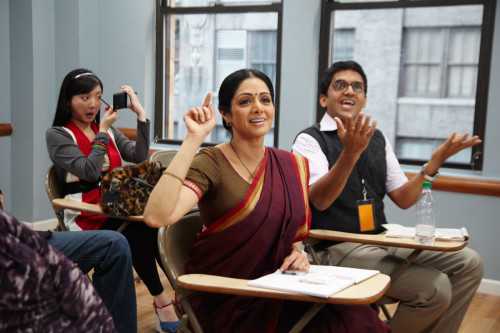Written by Ren Jender.
Meadowland, part of this year’s Tribeca Film Festival (playing this Friday, April 24) has a great first scene–a husband and wife in the front seat of a car with their young son chattering and eating cookies in the back. What we know (from every synopsis of this film) is: the son will soon go missing. So the short car ride and trip to the gas station convenience store becomes a thriller in which we wonder: will it happen now? How about now? At the terrible moment when both parents realize their son is lost the camera lingers separately on their anguished faces, then we’re immediately transported to a year later: the mother, Sarah (Olivia Wilde) drunk at their friends’ apartment while the husband, Phil (Luke Wilson) sits on the couch wearing a tight smile. Wilson turns in another solid performance as a working class guy: after a similar role in The Skeleton Twins, whose cinematographer, Reed Morano, is Meadowland’s director (her first time directing).
The couple, we see in a cab ride home, are still stung with grief, especially since they’ve never found out what happened to their son. A detective visits with vague leads about what might have happened to the boy (the worst scenario possible, perhaps caught and eventually killed by a serial pedophile), but Sarah refuses to even glance at the photos of the suspect.
Morano acts as the film’s cinematographer as well as the director (a more unusual combo than one would expect) and, as in her work in Kill Your Darlings, The Skeleton Twins, and the first season of the recently cancelled Looking, she has a stunning visual sense: impressionistic shots of sky and clouds, and one scene with the camera looking an animal directly in the eye. She also shows a gift for working with actors. In a close-up Sarah takes a piece of a (year-old) cookie that is trapped deep in the car seat and puts it in her mouth, like a communion wafer: she closes her eyes and, for the first time since before her son went missing, we see her face smooth, for a moment, into bliss. The only other time we see her free from tension and sorrow is when, in another stunning shot, this one on a rooftop, she states with great confidence, “My son is alive.”

Throughout much of the rest of the action, Wilde as Sarah, with dark circles under her large pale eyes and hollows under her cheeks, resembles the figure in the Munch painting The Scream, especially when she wears a yellow hoodie to wander the city by herself, sometimes imagining she catches a glimpse of her son on the crowded sidewalk, another time teetering too close to the edge of the subway platform.
Phil is a New York city cop, and the film’s script operates under what–considering recent headlines–seems like the naive assumption that he mainly acts as a kindly social worker, as when he comes in for a repeat noise complaint from a young couple who aren’t getting along. Also in the mix is Phil’s brother, Tim (Giovanni Ribisi) who comes to stay with the couple “temporarily.” It’s the sort of role in which the screenwriter (Chris Rossi) asked himself, “How can I convey this character is a self-medicating, self-loathing fuck-up,” so gives him a line early in the film in which the character says… he’s a self-medicating asshole. Ribisi’s performance is equally unsubtle.
Sarah works as a teacher and starts to identify with an autistic student who gets in trouble for stealing school library books about his favorite obsession, elephants. She finds out he is also a foster kid. Rossi can’t seem to stop himself from piling terrible circumstances onto this kid: when Sarah follows his surly, neglectful foster mother (Elisabeth Moss, at first shot from the back and at a distance so we don’t recognize her from Mad Men) after she drops his lunch off at school, Sarah sees her disappear into a gas station bathroom to turn a trick, and when Sarah later engages her in conversation, the woman denies she has any children. She wears sweatpants with “Juicy” across the ass and bright, heavy, blue eye shadow just in case we didn’t get the point that she’s supposed to be tacky as well as a “bad” Mom.
Rossi’s penchant for overkill ruins the film in the last third, in which Sarah becomes increasingly desperate and unhinged. Meadowland is one of those movies in which to show how full of self-loathing a previously level-headed character played by a beautiful actress is, she fucks a really gross (in every sense) guy after we in the audience have repeated to ourselves, ”Please don’t fuck the gross guy. Please don’t!” Sarah also cuts into her arm, has a breakdown in front of her students, tries a highly addictive drug, and takes actions creepily parallel to those the police suspect someone did to her own son.
Pauline Kael once wrote that critics often cry “art” when they should be saying “ouch” and though Kael has been dead for years, this film shows that trend, which she wrote about a half-century ago, is still going strong. Everything that is terrible in Sarah’s life (and Sarah, not Phil, is the film’s central character) just gets worse (with a tiny sliver of redemption at the end that is too little, too late): an adolescent’s idea of “realism.” Better films show us grief over the loss of a child in a more nuanced context. In The Accidental Tourist, William Hurt’s character, Macon, meets a slightly older boy who resembles his dead son (and is the age he would have been had he lived) and the encounter gives Macon some closure. In The Orphanage the mother’s last interaction with her son happens while he is having an incredibly violent tantrum. We sense that part of her effort to reunite with him is to make sure this memory isn’t the last one the two have of each other.
An additional note I mention often in my reviews: maybe I’m a dreamer, but I’m hoping Meadowland will be one of the last films set in New York in which every main character is white. John Leguizamo plays a member of Phil’s grief support group, and Sarah has Black colleagues and students, but otherwise the film might as well take place in Oslo. When I think of a teacher married to a cop in today’s New York City, I don’t picture two white people–or even two straight people. The current mayor of New York is a white guy married to a queer Black woman, but film directors and producers still can’t imagine anyone would be interested in seeing a movie about a similar family onscreen.

Another film at Tribeca about a mother’s grief for her son is the excellent and multi-layered documentary The Armor of Light (playing this Saturday, April 25) the first film directed by Abigail Disney who has had a prolific career as the producer of films including She’s Beautiful When She’s Angry, Pray The Devil Back to Hell, and Vessel. Much of the film’s promotional materials emphasize the trajectory of Rob Schenck, a white Evangelical minister and fixture of the far right, who comes to see his “pro-life” views must include a stand against the National Rifle Association (NRA). But the more interesting person in the film (who gets about equal screen time) is Lucy McBath, the mother of a Black teenager, Jordan Davis, shot inside a car at a gas station. Davis’s killer invoked Florida’s “stand your ground” laws in his defense, which state that anyone who “feels” as if his life is in danger is free to shoot and kill the person he thinks is a threat. McBath, whose dentist father was part of the NAACP in 1960s Illinois, immediately understands the racial aspect of this killing and others like it, but Schenck doesn’t bring up race until the film is more than half over. We in the audience see a marked difference in how a white congregation and a Black congregation react to his new rhetoric against guns and the NRA.
What goes unsaid in the conversations of right-wing, white men and the repeated montage of white guys at gun shows is the connection between gun violence and masculinity: the popular fantasy articulated by many of the men to be “a good guy with a gun” who stops “a bad guy with a gun” by shooting him, something which even many police officers rarely, if ever, do. While the men talk about “protecting their families” I thought about all the women who are threatened or killed by guns their own husbands, boyfriends, and acquaintances point at them, a concern to which these men seem oblivious. Instead, they talk about the government taking away their guns with the same vehemence they would about government taking away their balls.
Also fascinating is McBath’s meeting with Schenck in which both cite Bible passages to make their points, but which concludes with McBath in tears telling him, “It’s vitally important that you help. They will listen to you.” McBath states later, when she is alone on camera that although she doesn’t “condone” abortion, she would never interfere with another woman’s reproductive choice, but feels like she and Schenck have some common goals around guns, saying, “This is what this is all about: fighting for life.” We see her testifying in front of Congress, and she eventually quits her job to devote her time to being the spokesperson for Moms Demand Action for Gun Sense in America.
I couldn’t help being a little cynical about Schenck’s intentions. He keeps citing the Bible and Jesus for his newfound, anti-gun mindset but with his long support of right-wing politicians (including members of the Tea Party) I wondered if he had read any of the many Bible passages in which Jesus ministers to the poor, the people those same politicians build their careers disparaging while defunding public programs meant to benefit them.
We see the slow, frustrating course McBath and Schenck have ahead when Schenck meets with three other anti-choice stalwarts (all white men, of course) across a table and tries to persuade them the NRA is antithetical to Christian values, asking, “Is that a pro-life ethic?” Two of the men yell at him in response, but he seems to sway the third, a triumph we can’t help hoping will repeat itself at other tables across the country.
[youtube_sc url=”https://www.youtube.com/watch?v=hSP0Soy8ACk” iv_load_policy=”3″]
Ren Jender is a queer writer-performer/producer putting a film together. Her writing. besides appearing every week on Bitch Flicks, has also been published in The Toast, RH Reality Check, xoJane and the Feminist Wire. You can follow her on Twitter @renjender






